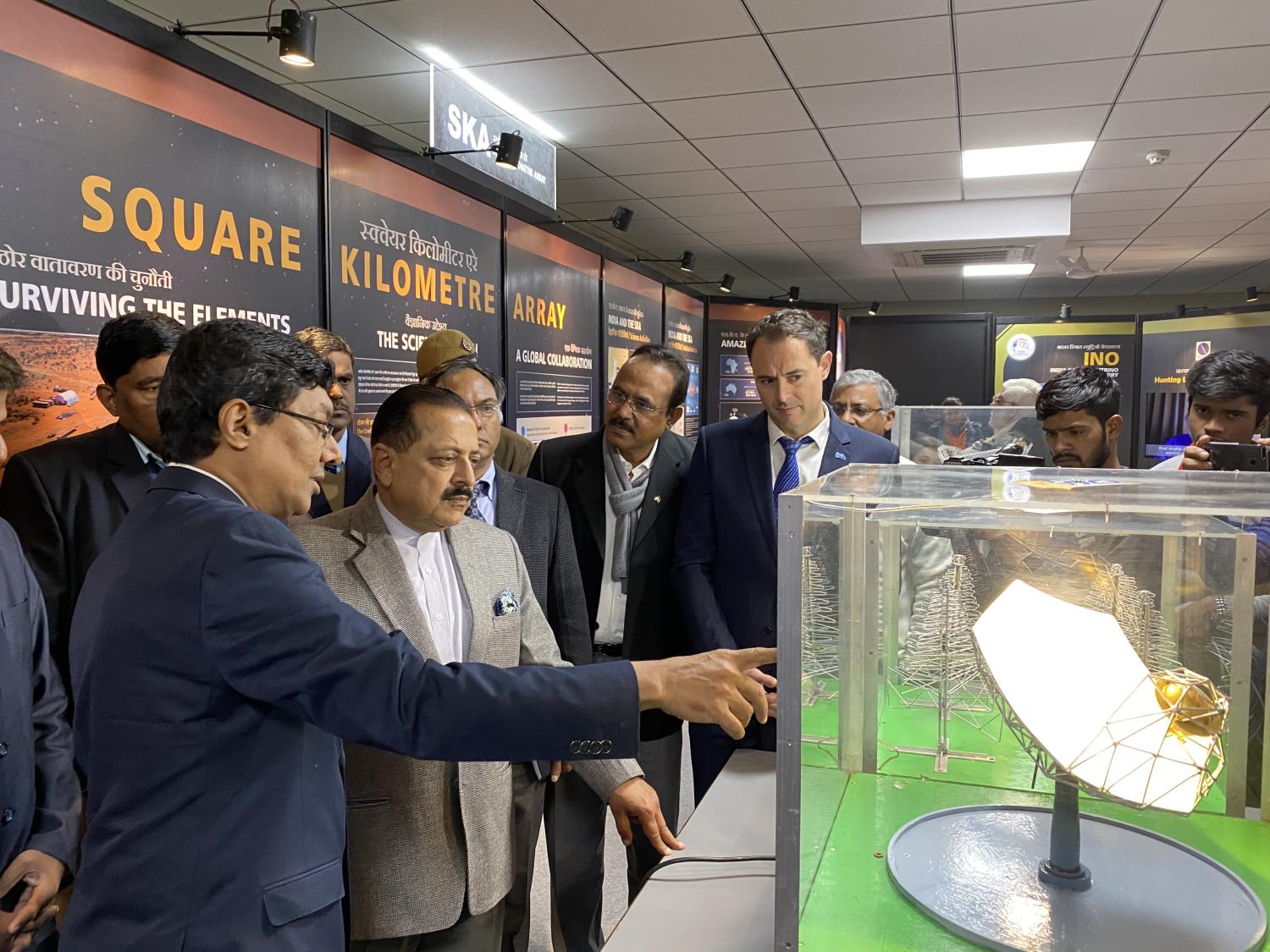India to become a full member of the SKA Observatory
The Department of Atomic Energy (DAE), which is jointly funding India’s contribution alongside the Department of Science and Technology, said that plans are now under way to sign the SKA Observatory Convention, the intergovernmental organisation’s founding treaty.
India has contributed heavily to the design and development of the SKA telescopes over time, particularly in the software domain, having been involved in the SKA project since its earliest days.
Full membership has long been anticipated; the Indian government was a party to the negotiation of the SKAO Convention, and participated in the preparatory activities that led to the creation of the Observatory in early 2021.
In 2022, the SKAO signed a cooperation arrangement with India’s National Centre for Radio Astrophysics (NCRA), acting on behalf of the DAE, which enabled the science and technology communities and industry to remain involved while work towards full national membership progressed.
“Joining the SKAO is a natural step for a country with such a strong tradition of radio astronomy research,” said SKAO Director-General Prof. Philip Diamond. “India’s scientific ambitions are clear to see, particularly in the development of the world-class upgraded Giant Metrewave Radio Telescope (uGMRT) and recent successful space missions. I’m very pleased that the SKAO is a priority for the Indian government and that the journey towards full membership is now formally under way.”
India is positioned to supervise the development of the software required to monitor and control the SKA telescopes, building on NCRA’s leading role in the international Telescope Manager consortium during the critical design phase. This software will issue all the commands necessary to execute astronomical observations – akin to the human body’s neural system.
There are also plans to build an SKA Regional Centre – part of a global network – to facilitate the processing, storage and delivery of SKAO data products to the astronomy community. All this will be executed with significant contributions from and benefits to the country’s software industry.
India’s radio astronomy community, led by Prof. Govind Swarup, put forward one of the first concepts for a large radio observatory of the class of the SKAO in the 1990s. Today, a consortium of more than 20 academic and research institutes contributes to India’s participation, led by NCRA and its Director Prof. Yashwant Gupta, who’s been championing India’s efforts in the SKA project for over a decade.
Scientists based at Indian institutions are active in 12 of the SKAO’s Science Working Groups, and hold co-chair positions in the Solar, Heliospheric, and Ionospheric Physics, Epoch of Reionisation, and Pulsars groups. National-level SKA workshops have been held almost every year since 2014, and India also hosted 2016’s international SKA Science Meeting.





